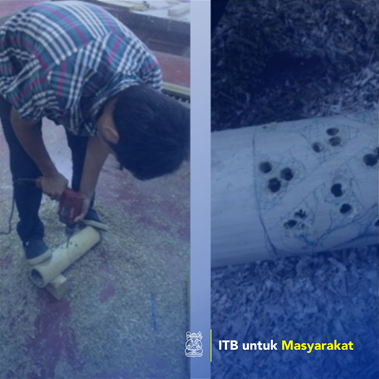

Budi Isdianto
Senenan is one of the local villages located in Jepara, Central Java which has many potential sculptors to be trained and developed. Craftsmen in Jepara so far are very dependent on the existence of timber as the main ingredient in making engraving, but in reality the existence of timber decreases over time. The result is wood prices to be high and not affordable. If this phenomenon is left, then maybe Jepara craftsmen will be extinct. The reason behind this program is to help the sustainability of the carving industry in Jepara. This program must find a solution for them, by intercourse from basic ingredients into bamboo. Indonesia, which has abundant bamboo supplies has the potential to continue to grow bamboo in various fields. This program seeks to raise the value and presence of bamboo in the community by combining with typical Jepara carvings which have only relied on wood. In addition, with material enrichment used will increase the ability of craftsmen in work. The obstacle that may arise is in the adaptability of the sculptors who are more familiar with the characteristics of timber, which then the sculpting must know the characteristics of bamboo material. Some stages that have been done and produced in this activity include: � choose type and dimensions (length, diameter, thickness) the most suitable bamboo to be carved. This activity managed to find that Bamboo Petung originating from Lebak, West Java, was very good at being used as carved raw materials because it had a level of violence and good strength, while bamboo from Jepara was vulnerable to carved so that it was easily destroyed. � Housing a workshop for 2 weeks (31Agustus � 11 September) by inviting 2 carving craftsmen located in the FSRD workshop area. This workshop collaborates with the LPM of the Islamic University of Nahdlatul Ulama (UNISNU), Jepara in the process of teljersiletizing. � This activity managed to produce 8 prototypes (non finishing) bamboo carvings with various methods, including manual techniques and using machines. The bamboo field that was carved, from the whole bamboo, partly to special parts to see the expression produced. The aim is to measure the time and capabilities of craftsmen in making bamboo carvings. � craftsmen who have returned to Jepara are expected to be able to develop knowledge of bamboo carving techniques to other craftsmen
How many artworks / design / architecture / regional planning, the implementation of social care activities in the form of education / counseling / assistance
Craftsmen in Jepara so far are very dependent on the existence of timber as the main ingredient in making engraving, but in reality the existence of timber decreases over time. The result is wood prices to be high and not affordable.